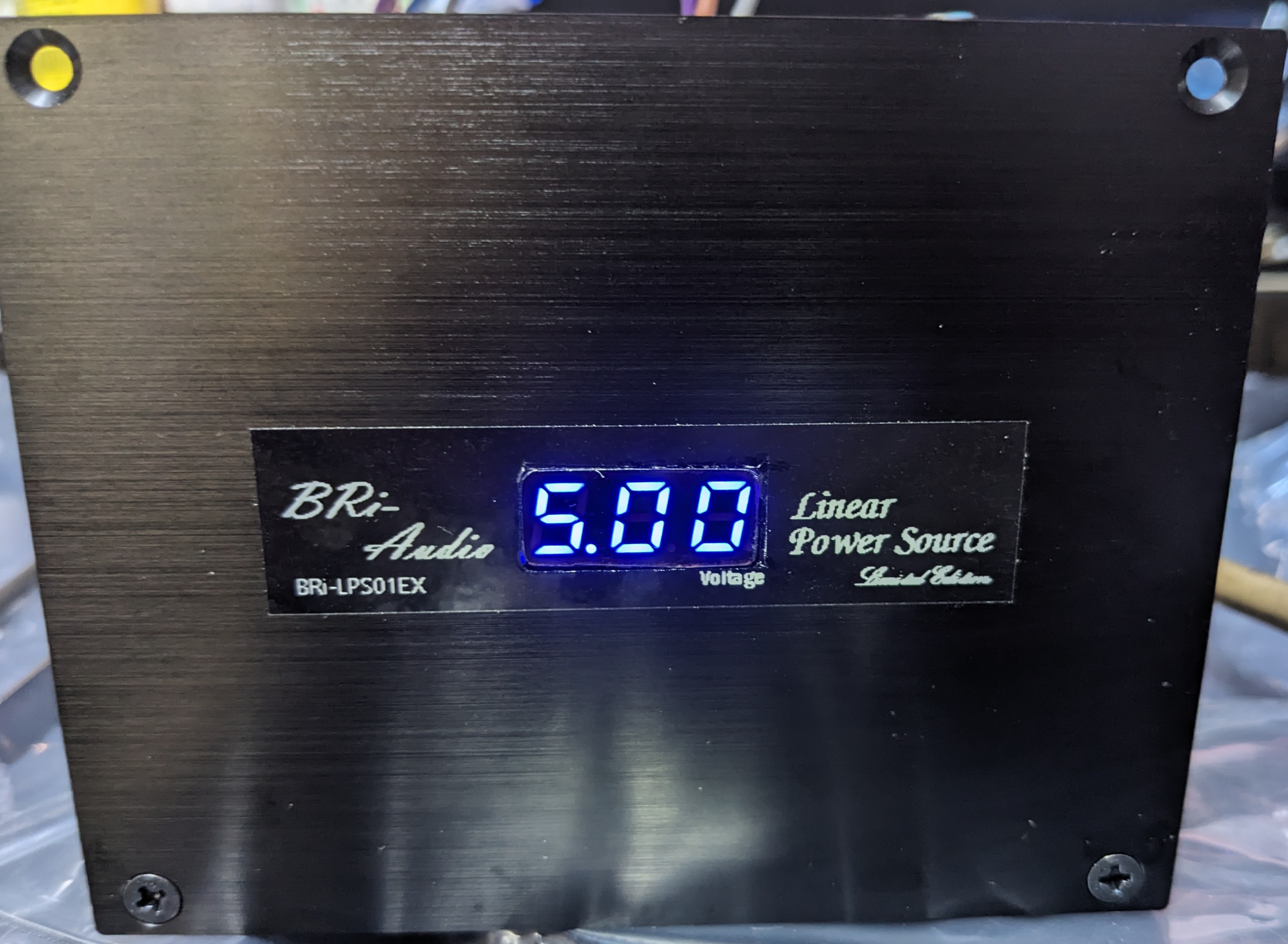

BRi-LPS01 series Details


BRi-LPS01 series Details

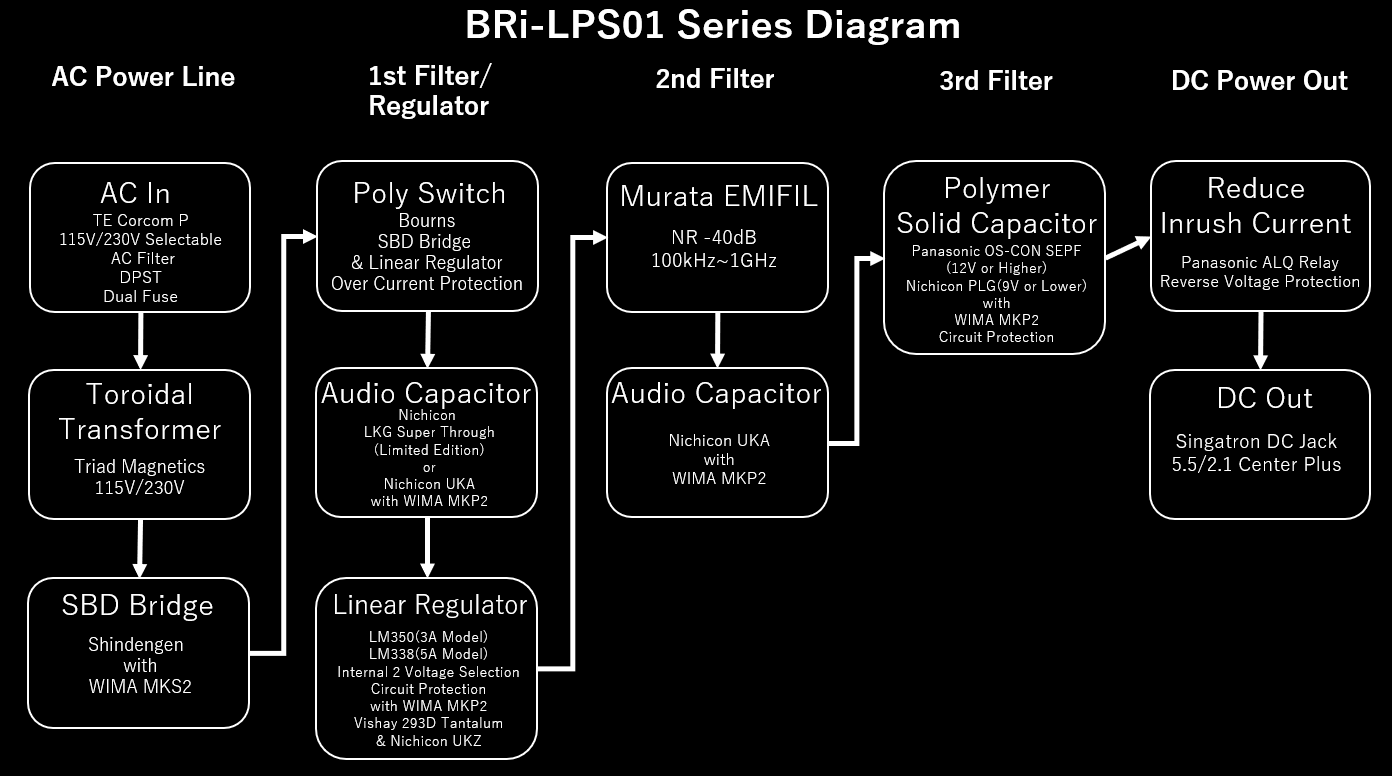

Worldwide compatible noise filter IEC inlets
First is the AC power input, which has an AC noise filter, dual fuses, switch and 115V/230V switchable by fuse box insertion, and the IEC inlet itself is a fully shielded version of the TE Connectivity Corcom PS, which is more performance-oriented than cost-oriented. The IEC inlet itself is a fully shielded version of the TE Connectivity Corcom PS, with performance over cost.
Dual fuses are used, and although it is costly to use two fuses, many Japanese outlets are difficult to identify L/N, or people don't care, so the inside of the outlet is protected no matter which way it is plugged in.
It is compatible with both American/midget (metric) sizes.
As for the fuse, we initially had a policy of not including it, as some people choose to even use a fuse, but we have adopted the Littelfuse 285 gold-plated delayed ceramic fuse.
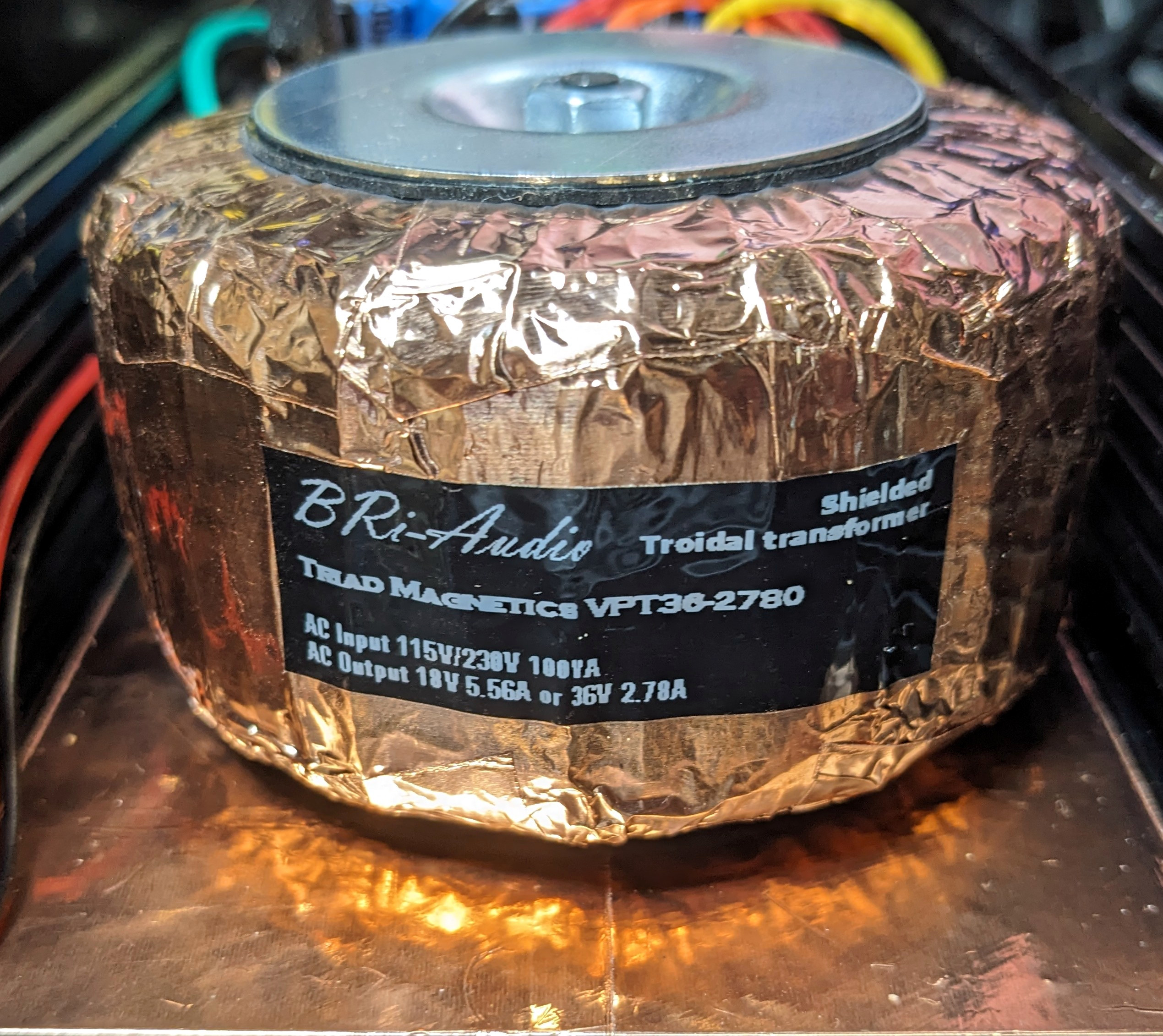
Shielded toroidal transformer
Basically, a 100VA 115 parallel/230 series primary voltage Triad Magnetics toroidal transformer is used, with the primary voltage input specified on the IEC inlet side and the secondary voltage sent in parallel to the main board.
As there is concern about sound quality degradation due to magnetic flux leakage if the transformer is left in place, double-sided conductive copper foil tape is applied to the entire circumference of the toroidal transformer and a ground point is attached and connected to the case ground point to reduce noise.
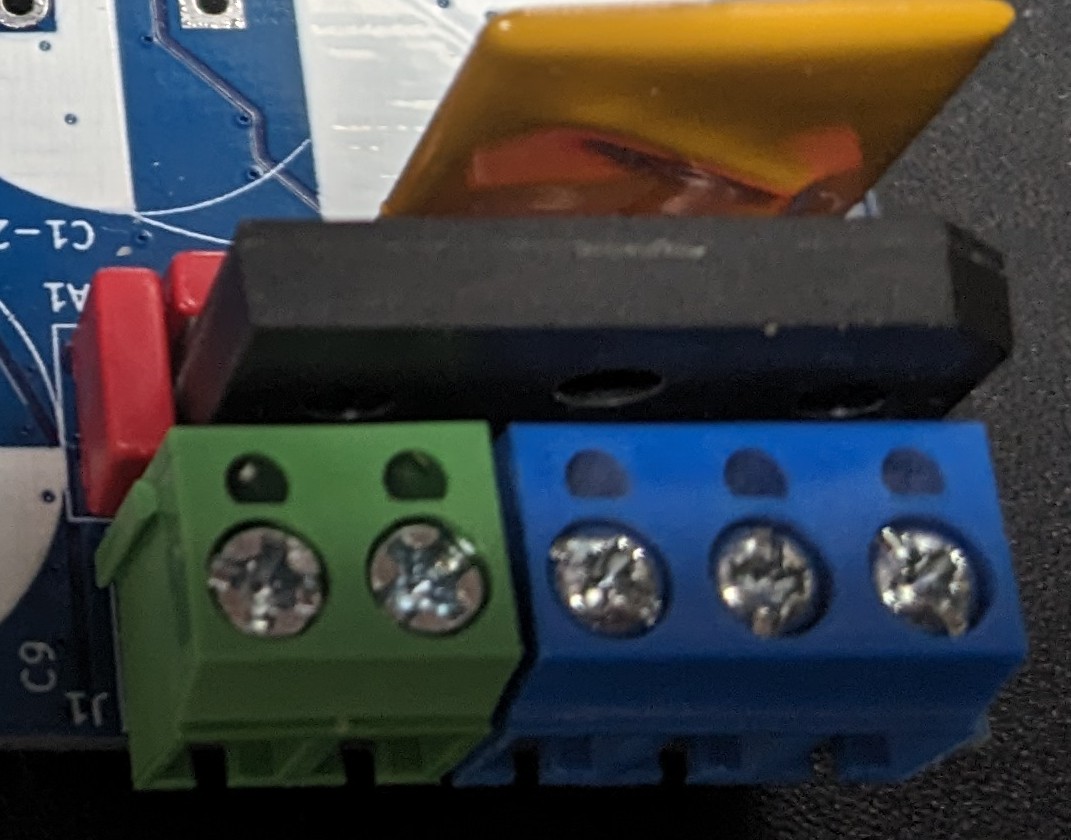
Original design power supply board
Rectifier circuit (SBD bridge)
A SBD bridge (60V 15A) from Shindengen is used, with WIMA MKS2 between terminals to suppress ringing and a Bourns PolySwitch in the rear stage to stop the current in the event of overcurrent and prevent circuit damage.
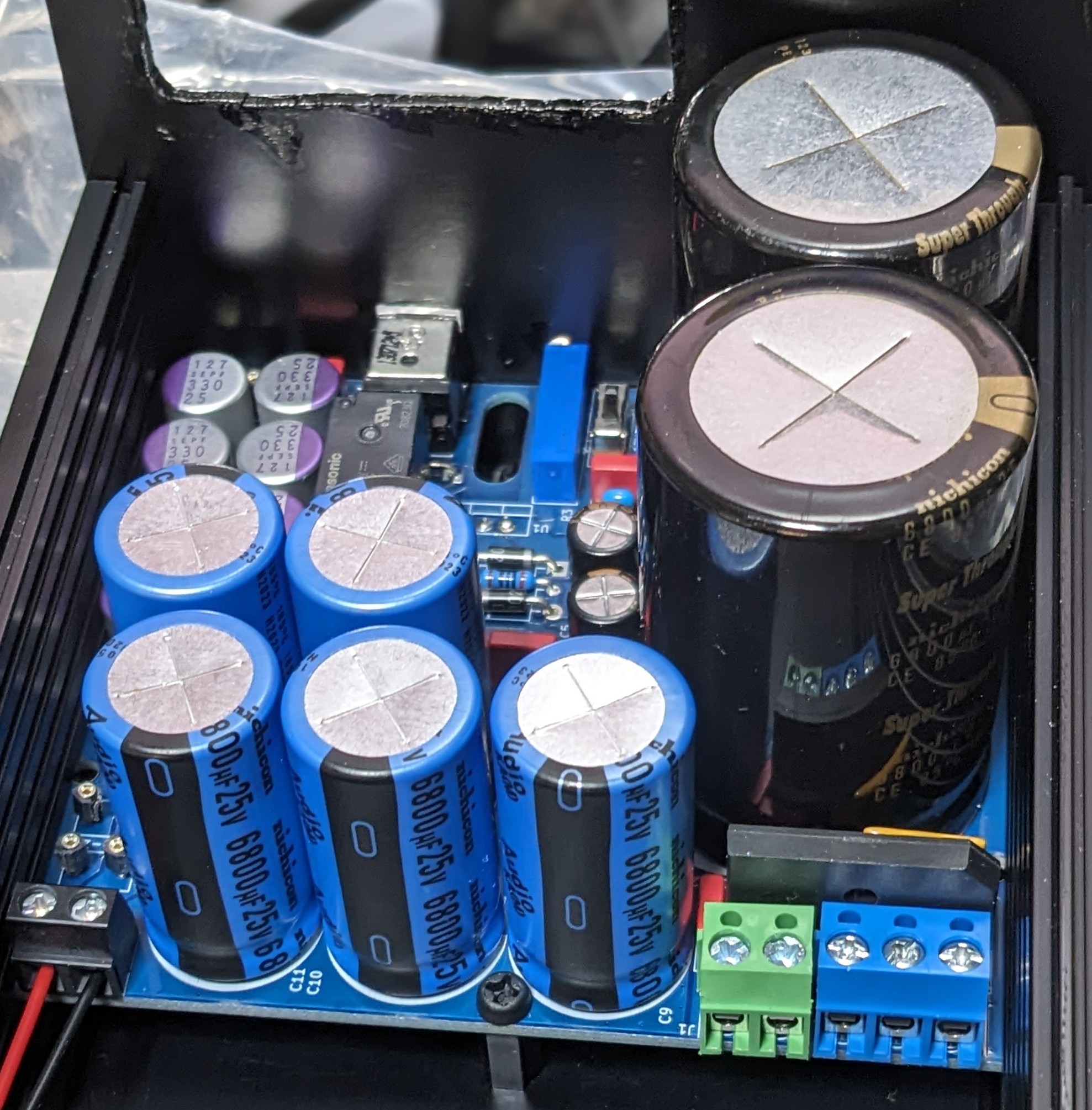
Primary filter section
Two Super Through 35V 6800uF of Nichicon's top-of-the-range audio power smoothing capacitors LKG, which are no longer in production and are now becoming hard to find, are used here.
The linear regulator has rivulet rejection, but first, it smoothes with a total of 13,600uF, and the KG's wide through performance from high to low frequencies.
Note that the KG is only available in a limited edition, while the standard version is smoothed using four of Nichicon's current top-of-the-range audio UKA 35V 3300uF.
Linear regulator section
There are LDOs and switching regulators, but we dared to use a TI LM338T/NOPB, a standard linear regulator with low noise, and to obtain a maximum output of 5 A, we used a Vishay 293D tantalum capacitor 1uF/WIMA MKP2 0.1uF/Nichicon in the front and rear stages MUSE UKZ 10uF (discontinued, Vishay 293D 10uF when no longer on hand) and diodes in the protection circuit.
Originally, a film and 10uF aluminium electrolytic would have sufficed, but for stabilisation and high sound quality, the recommended 1uF tantalum capacitor is added.
Two output voltages can be specified by the connected Bourns 3006P variable and metal film resistors and switches.
Secondary filter section
In the secondary filter, based on the PSM01 series, Murata EMIFIL BNX-016-01, an EMI countermeasure noise filter from 100 KHz to 1 GHz, is placed for noise suppression, and then five Nichicon current top-of-the-range audio UKA 25V 6800uF and 34,000uF for noise elimination and smoothing.
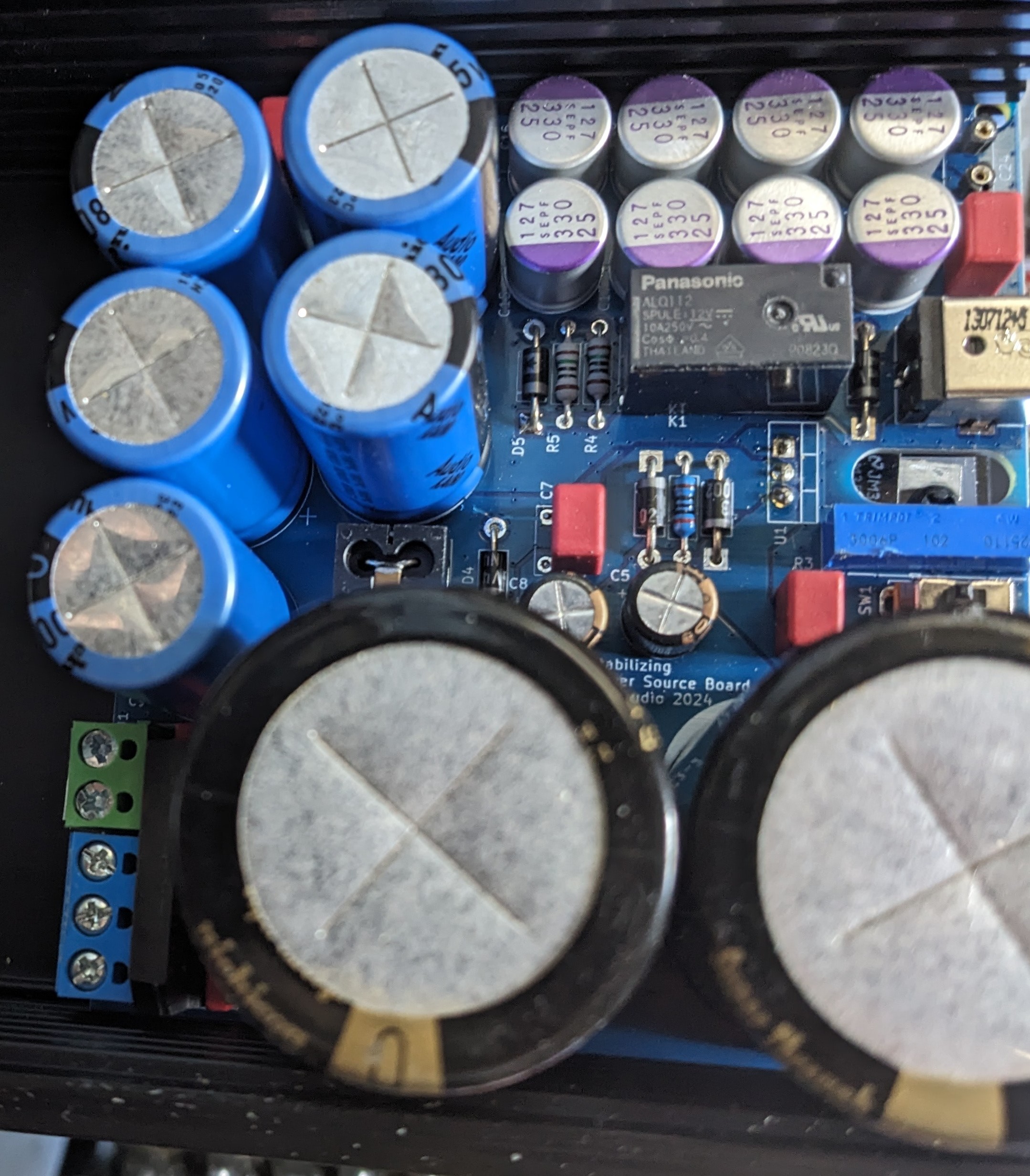
Tertiary filter section
In the tertiary filter, the output smoothed by the primary and secondary is connected in parallel with eight small, albeit expensive, low ESR polymer solid electrolytic capacitors with low ESR to ensure final noise reduction, smoothing and fast response. up to 9V, eight Nichicon PLG 16V 470uF, 3,760uf in total, Up to 15 V, eight Panasonic OS-CON SEPF 25V 330uF for a total of 2,640uF for clean power output.
inrush current suppression circuit
A Panasonic high-capacity contact relay is placed before the final output to suppress inrush currents.
As the unit has a smoothing capacity of over 50,000uF, an inrush current in excess of the maximum current is generated during charging to the capacitor.
This occurs until the voltage rises fully, so a relay is activated when the voltage reaches a predetermined level and flows to the output.
A thyristor or similar could be used to reduce the size of the unit, but this would limit the smoothing capacity, which is why it is not used in this unit.
DC output
Finally, the DC output is routed through the Singatron DC jack via a backflow prevention circuit. The DC jack on this unit is compatible with an outer diameter of 5.5 mm / inner diameter of 2.1 mm, and the connection is even more secure if a tuning fork type DC plug is used.
Alternatively, the recommended DC cable described below will also hold it securely.
This jack has a performance margin of up to 10A.
Recommended DC cables
No AC power cable or DC cable is included with this unit, as audiophiles often provide their own AC cables. IEC female - cables matched to the outlet in each country, often used with desktop PCs can be used.
DC cables also have different plug diameters depending on the connected device, so you will need to provide your own, or if you specify the plug shape when making an enquiry, we can produce one for an additional charge.
If the connecting device is also 5.5/2.1, we recommend the Oyaide 3398-DC LL series.
The Oyaide 102SSC is a very good cable that can transmit clean power as it is.
It is mounted from the SBD bridge to the DC output on a board that takes noise countermeasures into account in its original design, and with noise countermeasures and a total smoothing capacity of 50,000uF or more, it provides sufficient smoothing even for power-saving 5 V systems, making it a clean power supply.
In addition, by distributing capacitors from primary to tertiary and placing multiple small-capacity capacitors in the final tertiary, the response speed of the power supply is maintained, and the power supply has been developed with the aim of combining the high-speed response of a switching power supply with the cleanliness of a linear power supply.
Details of changes in Version 1.1
In Version 1.1, the following changes have been made to stabilise the output at high currents.
Improved heat dissipation of the linear regulator to avoid shutdowns.
- Changed the heat dissipation sheet of the linear regulator to Shin-Etsu 30BG.
- Additional copper heat spreader (90x50x1 mm) for quick heat diffusion
- Additional heat sinks at the bottom of the enclosure, near the linear regulator and heat spreader
PLG or OS-CON SEPF polymer solid capacitors for the tertiary filter have been set depending on the supported voltage,
For 5 to 15 V compatibility, three types can now be selected.
- Nichicon PLG 16V 330uF (maximum adjustable voltage 15.8V)
- Nichicon FPCAP RNL 25V 550uF
- Panasonic OS-CON SEPF 25V 330uF
A 24 V output version (max. 3 A) will be released on request.
